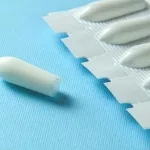Hey there! If you’ve ever wondered why a light tap on your arm feels so clearly, or why a baby’s heart develops the way it does, you’re about to discover a surprising little hero behind both sensations: the PIEZO2 ion channel. In the next few minutes, we’ll chat about what PIEZO2 actually does, why it’s a big deal for your heart and your sense of touch, and what scientists are cooking up in the lab. Grab a cup of coffee, settle in, and let’s explore together.
Quick Overview
What Is PIEZO2?
PIEZO2 is a massive protein—about 2,500 amino acids long—that forms a mechanically‑gated ion channel. Think of it as a tiny door on the surface of certain cells that swings open when it feels a push, stretch, or shear force. When the door opens, positively charged ions (mainly calcium) rush in, turning mechanical cues into electrical signals that the nervous system can read.
Where Does It Live?
The channel is most abundant in sensory neurons that wire our skin, joints, and some internal organs. But it also shows up in a handful of non‑neuronal cells, especially in the lining of blood vessels where it helps detect the flow of blood.
Why Should You Care?
Because PIEZO2 bridges two worlds that most of us never think intersect: the delicate world of touch and the robust world of cardiovascular development. When PIEZO2 works properly, you can feel the brush of a feather and your heart’s vessels can grow the right way during embryonic development. When it goes awry, the consequences can range from numbness to serious congenital heart defects.
Heart Connection
PIEZO2 in Coronary Vessel Development
During the early weeks of life, the heart’s own blood‑vessel network—known as the coronary vessels—forms in response to the mechanical forces of blood flowing through the embryo. Researchers have shown that PIEZO2 acts like a built‑in flow sensor for endothelial cells, the thin lining of those vessels. When shear stress from blood flow nudges the cell membrane, PIEZO2 opens, letting calcium in and triggering a cascade of signals that tell the cell to grow, branch, and organize correctly.
For a deeper dive into this fascinating process, check out our post on PIEZO2 coronary vessel development. It walks through the experiments that used mouse knock‑outs to prove that without PIEZO2, the coronary tree is under‑developed, leading to lethal heart failure shortly after birth.
From Development to Adult Heart Function
Even after you’re born, PIEZO2 keeps an eye on the pulse. In adult arteries, it senses changes in blood pressure and coordinates the release of nitric oxide, a molecule that tells smooth‑muscle cells to relax. In short, it contributes to the body’s ability to keep blood pressure steady during activities like running or climbing stairs.
Link to Congenital Heart Defects
When PIEZO2 carries loss‑of‑function mutations, the coronary vessels may never form the right way, leading to a spectrum of congenital heart defects. Some patients present with thin, malformed coronary arteries, while others show more complex defects such as ventricular septal defects. The connection is still being mapped, but the evidence is growing strong: the gateway that senses mechanical stretch is essential for shaping a healthy heart.
PIEZO2’s Role in the Broader Cardiovascular Landscape
Beyond the coronary arteries, PIEZO2 appears in the coronary vessel role research landscape as a mechanosensor that can influence angiogenesis—the formation of new blood vessels—in wound healing and even tumor growth. Ongoing cardiovascular research is exploring whether modulating PIEZO2 could help regenerate damaged heart tissue after a heart attack.
Side‑by‑Side Comparison
| Feature | Normal PIEZO2 Function | Loss‑of‑Function Impact |
|---|---|---|
| Mechanosensation in skin | Accurate perception of light touch and vibration | Reduced tactile sensitivity; difficulty with fine motor tasks |
| Coronary vessel development | Proper branching and lumen formation in embryos | Hypoplastic coronary arteries; risk of perinatal heart failure |
| Blood‑pressure regulation | Dynamic adjustment of vascular tone | Potential dysregulation leading to hypertension or hypotension |
| Pain modulation | Normal pain signaling after tissue injury | Blunted inflammatory pain; possible chronic pain reduction |
Beyond Touch
How PIEZO2 Powers Everyday Sensations
Every time you brush your hand over a rough surface, PIEZO2 in the sensory nerves of your fingertips opens like a tiny gate, translating that mechanical jolt into a burst of electrical activity that your brain instantly reads as “rough”. Without it, you’d miss out on the simple joy of feeling a pet’s fur or the comfort of a firm handshake.
PIEZO2 and Pain
Researchers have discovered that after inflammation—think a sprained ankle—PIEZO2 becomes more sensitive, amplifying the pain signal. In mouse models, knocking out PIEZO2 stops the development of mechanical allodynia (pain from normally non‑painful stimuli). This insight has sparked interest in targeting PIEZO2 for chronic pain relief. A recent study on piezo channels in pain reported that selective PIEZO2 antagonists reduced pain behaviors without affecting normal touch.
Proprioception—Your Body’s GPS
If you’ve ever closed your eyes and touched your nose, thank PIEZO2. The channel sits in muscle‑spindle and joint‑capsule neurons, feeding your brain constant feedback about limb position. Mutations that blunt PIEZO2’s function can lead to ataxia—unsteady gait and clumsy movements—because the internal GPS loses its signal.
Real‑World Story
Meet Maya, a bright 16‑year‑old who was diagnosed with a PIEZO2 loss‑of‑function variant after she struggled with balance in gym class. While her tactile sense remained mostly intact, she described the world as “a bit fuzzy” when it came to knowing where her arms were without looking. Physical therapy that emphasized visual cues helped Maya relearn movements, underscoring how adaptable the nervous system can be when one sensor is out of order.
Therapeutic Outlook
Balancing Activation and Inhibition
Because PIEZO2 is a double‑edged sword, any drug that targets it must walk a tightrope. Too much activation could lead to hyper‑sensitivity—think chronic itch or exaggerated pain. Too little, and you risk numbness or impaired cardiovascular reflexes.
Current Pharmacological Tools
Scientists have a small‑molecule agonist called Yoda1 that can “tickle” PIEZO2 open, mainly used in lab settings to study channel dynamics. Inhibitors are still in early discovery phases, with a few candidates showing promise in mouse models of neuropathic pain. No FDA‑approved PIEZO2 drugs exist yet, but several biotech companies have filed patents on selective modulators, hinting at future clinical trials.
Risks Worth Knowing
- Over‑activation: May cause heightened mechanical pain, chronic itch, or even promote undesirable vascular growth in tumors.
- Inhibition: Could blunt essential reflexes such as the baroreceptor response that helps keep blood pressure steady during sudden postural changes.
What’s on the Horizon?
There’s an exciting pipeline of gene‑editing studies attempting to correct PIEZO2 mutations in patient‑derived induced pluripotent stem cells (iPSCs). Additionally, tissue‑engineered heart patches that over‑express PIEZO2 are being evaluated for their ability to improve vascular integration after myocardial infarction.
Research Tools
Electrophysiology—Feeling the Current
One classic way to study PIEZO2 is the high‑speed pressure‑clamp assay. In this set‑up, a tiny glass pipette forms a seal on a cell’s membrane; a rapid suction pulse mimics mechanical force, and the resulting ion current is recorded. This method, described in “Touch, Tension, and Transduction” (2016), lets scientists quantify how much pressure is needed to open the channel and how quickly it closes.
Cryo‑EM—Seeing the Shape
Thanks to cryo‑electron microscopy, we now have near‑atomic pictures of the channel’s “propeller‑shaped” trimer. Those images revealed the two C‑terminal transmembrane helices that form the ion‑conducting pore, and the sprawling peripheral “blades” that likely sense membrane curvature. While most structures are of PIEZO1, PIEZO2 is highly homologous, so the insights translate well.
Genetic Models
Mouse lines with conditional knockout of PIEZO2 in endothelial cells have illuminated its role in coronary vessel sprouting. Human iPSC‑derived sensory neurons, edited with CRISPR to carry specific PIEZO2 mutations, help model touch and pain phenotypes in a dish. These tools collectively bridge the gap between molecular structure and whole‑organ physiology.
Key Takeaways
- PIEZO2 converts mechanical force into electrical signals, enabling touch, proprioception, and vascular development.
- During embryogenesis, it senses blood‑flow shear stress, guiding coronary vessel formation; mutations can cause congenital heart defects.
- In adults, PIEZO2 helps regulate blood‑pressure reflexes and can magnify pain after injury.
- Therapeutic strategies aim to fine‑tune PIEZO2 activity—agonists for regenerative heart work, antagonists for chronic pain—while carefully watching for side effects.
- Cutting‑edge techniques like pressure‑clamp electrophysiology, cryo‑EM, and CRISPR mouse models keep expanding our understanding.
Wrapping Up
So, what do we learn from this remarkable channel? First, that the world of mechanosensation isn’t just about feeling a gentle breeze—it’s also a silent architect shaping our heart’s blood‑vessel network before we even take our first breath. Second, that a single protein can be both a guardian of sensation and a potential therapeutic target for heart disease and pain.
If any of this sparked your curiosity, I encourage you to explore the linked articles—there’s a treasure trove of detailed experiments waiting for you. And if you’ve ever wondered why a particular touch feels “off” or know someone with a heart condition that seems puzzling, consider that PIEZO2 might be part of the story.
What do you think? Could the next breakthrough in heart‑health or pain relief hinge on tweaking a tiny mechanical gate? I’d love to hear your thoughts. Feel free to reach out with questions or share a personal experience—knowledge grows best when we discuss it together.


















Leave a Reply
You must be logged in to post a comment.